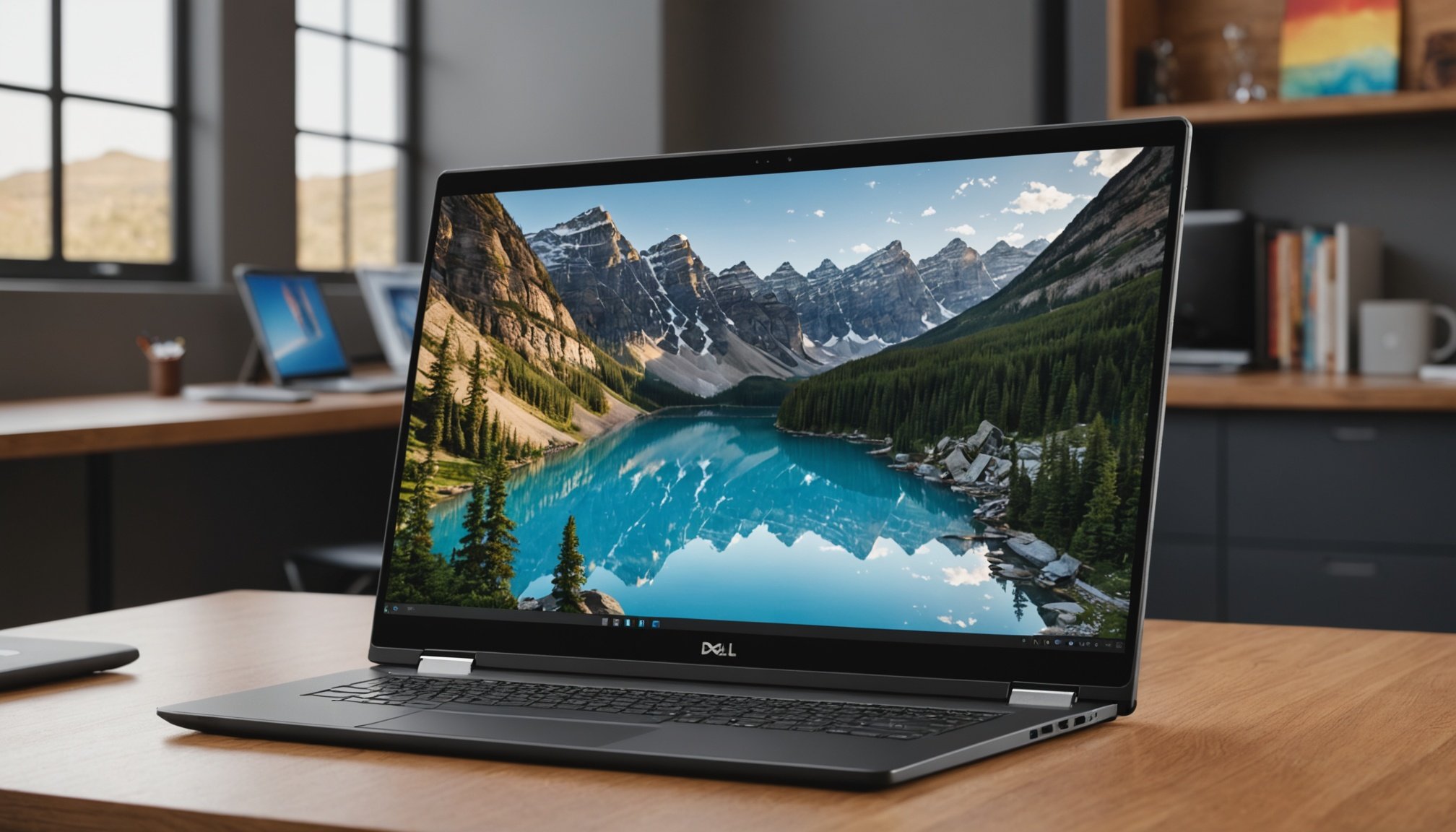Performance Optimization for Graphic Design
For those utilizing the Dell Inspiron 7706 in graphic design, performance optimization is essential to ensure seamless and efficient operation. Let’s explore some key strategies.
First, understanding the hardware specifications of your device is vital. The Dell Inspiron 7706 is equipped with a powerful processor and a high-resolution display, both crucial elements for graphic design tasks that demand high processing power and detailed visual output.
Also to read : Mastering remote connectivity: your ultimate guide to setting up a remote desktop on the lenovo thinkcentre m720q tiny
Next, to maintain peak graphic design performance, keeping your system updated is necessary. Regular system updates and driver installations are critical. These updates not only enhance security but also improve system stability and performance, adapting the device to work optimally with the latest graphic design software.
Moreover, optimizing power settings can significantly boost performance. Switching to high-performance power settings allows the Dell Inspiron 7706 to use more energy for processing tasks, reducing lag and increasing productivity.
Have you seen this : Unlocking full wi-fi potential: elevate your asus zenwifi ax for supreme coverage across your three-story home
By focusing on these aspects, users of the Dell Inspiron 7706 can ensure that their machine is perfectly optimized for the high demands of modern graphic design applications.
Recommended Settings for Adobe Creative Cloud
Adjusting Adobe Creative Cloud settings can dramatically enhance your graphic design workflow. For smoother performance, particularly in applications like Photoshop and Illustrator, it’s vital to fine-tune a few key settings.
One of the foundational adjustments involves configuring preferences for optimal rendering times. To achieve this, allocate more RAM to these applications. Navigate to Preferences > Performance and increase the amount of RAM reserved for Photoshop or Illustrator. This optimises the software’s ability to handle complex graphic design tasks effectively.
Another significant setting is managing memory and cache. In Photoshop, increasing the cache levels will improve the speed of image rendering and editing. This is particularly beneficial when working with high-resolution files or numerous layers.
Furthermore, optimising your scratch disks plays a crucial role in managing large files. Always choose a fast, secondary drive to serve as your scratch disk, thereby alleviating the main drive’s burden.
By focusing on these key settings adjustments, you ensure that your Adobe Creative Cloud applications operate at peak efficiency, enhancing productivity and creativity in your design projects.
Software Compatibility and Installation
Understanding the intricacies of software installation ensures a seamless experience while using Adobe Creative Cloud. Selecting the right Adobe Creative Cloud compatibility for your system is crucial.
Compatible Software Versions
When considering Adobe Creative Cloud, ensure your system meets the necessary requirements. Software versions compatible with the latest operating systems will optimise performance. Always verify whether your hardware supports the most recent updates to avoid installation issues.
Installation Guidelines
For a smooth software installation, follow these steps closely:
- Begin by downloading the application installer from the official Adobe website.
- Ensure you have a stable internet connection, as some components download during setup.
- Follow the on-screen instructions to complete the installation without interruptions.
Reboot your system after installation for the best functionality.
Trial vs Purchase Options
Adobe Creative Cloud offers flexibility with trial and full purchase options. Trial versions grant a limited-time experience of features, allowing you to test software compatibility. Consider purchasing for unhindered access and additional benefits, such as regular updates and comprehensive support. Opting for a full purchase provides long-term cost benefits over continuous trial extensions.
Hardware Configurations for Effective Use
Dell Inspiron hardware can be optimised to fulfil various needs, especially in creative domains. Let’s explore how you can enhance your device with the right components and accessories.
Upgrading the RAM is crucial, particularly for graphic design hardware. At least 16GB of RAM is advisable for seamless functionality across multiple applications. This ensures that your device can handle resource-intensive tasks without lag, providing a smoother experience during creative processes.
Storage is another important factor. Consider an SSD over an HDD for faster read and write speeds. An SSD significantly reduces load times and boosts overall performance, making it a vital upgrade for any graphic design hardware.
A competent graphics card is indispensable for creative professionals. The Dell Inspiron hardware can be upgraded to include dedicated graphics like NVIDIA or AMD, depending on your specific requirements. These cards ensure that rendering and other graphics-intensive tasks are executed efficiently.
Don’t overlook external devices and accessories. Investing in quality peripherals, like an ergonomic mouse and keyboard, can enhance usability significantly. A high-resolution external monitor can also provide the larger workspace often needed in design tasks, thus complementing the graphic design hardware setup effectively.
Tips for Seamless Use of Adobe Creative Cloud
When diving into Adobe Creative Cloud, understanding best practices for managing files and projects can significantly enhance your graphic design workflow. Start by organising your files with descriptive names and consistent folder structures within the cloud. This practice not only improves efficiency but also allows for easier tracking across multiple projects.
Utilising Adobe’s cloud storage can revolutionise how you collaborate and back up your work. By inviting team members to shared folders, you enable seamless collaboration, ensuring everyone has access to the latest files. Regularly back up your projects to the cloud to safeguard against data loss, providing peace of mind and security for your creative endeavours.
Streamlining workflows is crucial for speeding up project completion. Customising your workspace with frequently used tools readily accessible can save time, allowing you to focus more on creativity rather than navigation. Utilise Adobe’s preset templates and libraries to further enhance productivity by quickly implementing tried-and-tested design elements without starting from scratch each time.
User Reviews and Comparisons
Graphic design professionals often seek reliable laptops for optimal performance. Dell Inspiron 7706 reviews reveal notable strengths and weaknesses from those using it for graphic design tasks.
Strengths highlighted by users include the laptop’s vibrant display quality and robust performance capabilities, crucial for detailed design work. The Dell Inspiron 7706’s touch screen functionality provides an intuitive interface, often praised for enhancing user interaction with graphic design software.
In contrast, some users pointed out weaknesses such as its bulkier build compared to sleeker models on the market, which can affect portability. The battery life also receives mixed feedback, with some users desiring longer duration for on-the-go creativity.
When compared with similar devices, the Dell Inspiron 7706 holds its ground in terms of processing power and screen clarity. However, alternatives may offer lighter designs and extended battery life, which some graphic designers prioritize.
Overall, user feedback indicates that while the Dell Inspiron 7706 excels in display and performance, potential buyers should consider their specific needs regarding portability and battery endurance. This makes browsing graphic design user feedback essential for informed decision-making.
Troubleshooting Common Issues
Graphic designers often encounter performance issues while working with Adobe Creative Cloud. These might include software crashes or slowdowns, which can be frustrating. Let’s explore some effective troubleshooting graphic design solutions.
A common cause of reduced performance is hardware compatibility. Ensuring your system meets Adobe’s recommended specifications can significantly enhance performance. Regularly updating your graphics card drivers and operating system also helps optimise functionality.
If you’re experiencing frequent software crashes, clear the cache in your applications. This often resolves issues caused by corrupted files or overloaded memory. Additionally, disabling unused plugins can prevent unnecessary strain on the system, thereby improving stability.
For ongoing support, Adobe offers extensive resources. The Adobe Support Community is a platform where users share solutions, while official product forums can provide insights into Adobe Creative Cloud problems in real-time. Additionally, Adobe offers technical support options for complex issues that users can’t resolve through community forums.
Addressing these common troubleshooting graphic design problems promptly not only enhances productivity but also ensures a smoother design experience with Adobe Creative Cloud. Regular maintenance and being proactive can avert many performance-related obstacles.











